
- Bittersweet (adj.): both pleasant and painful or regretful.
Saying goodbye to students is a bittersweet experience. The sweetness stems from seeing them successfully reach the end of a year-long journey, one filled with personal and academic growth. The bitterness bleeds from carving the word "former" in front of "students". These six letters represent the sobering realization that future reunions, no matter how joyful, won't replicate bygone days: the ordinary yet precious experience of seeing this particular cohort of bright-eyed students gathered together in our classroom for a regular day of class. That time has passed, run out, expired - preserved only in imperfect memories and paper trails.
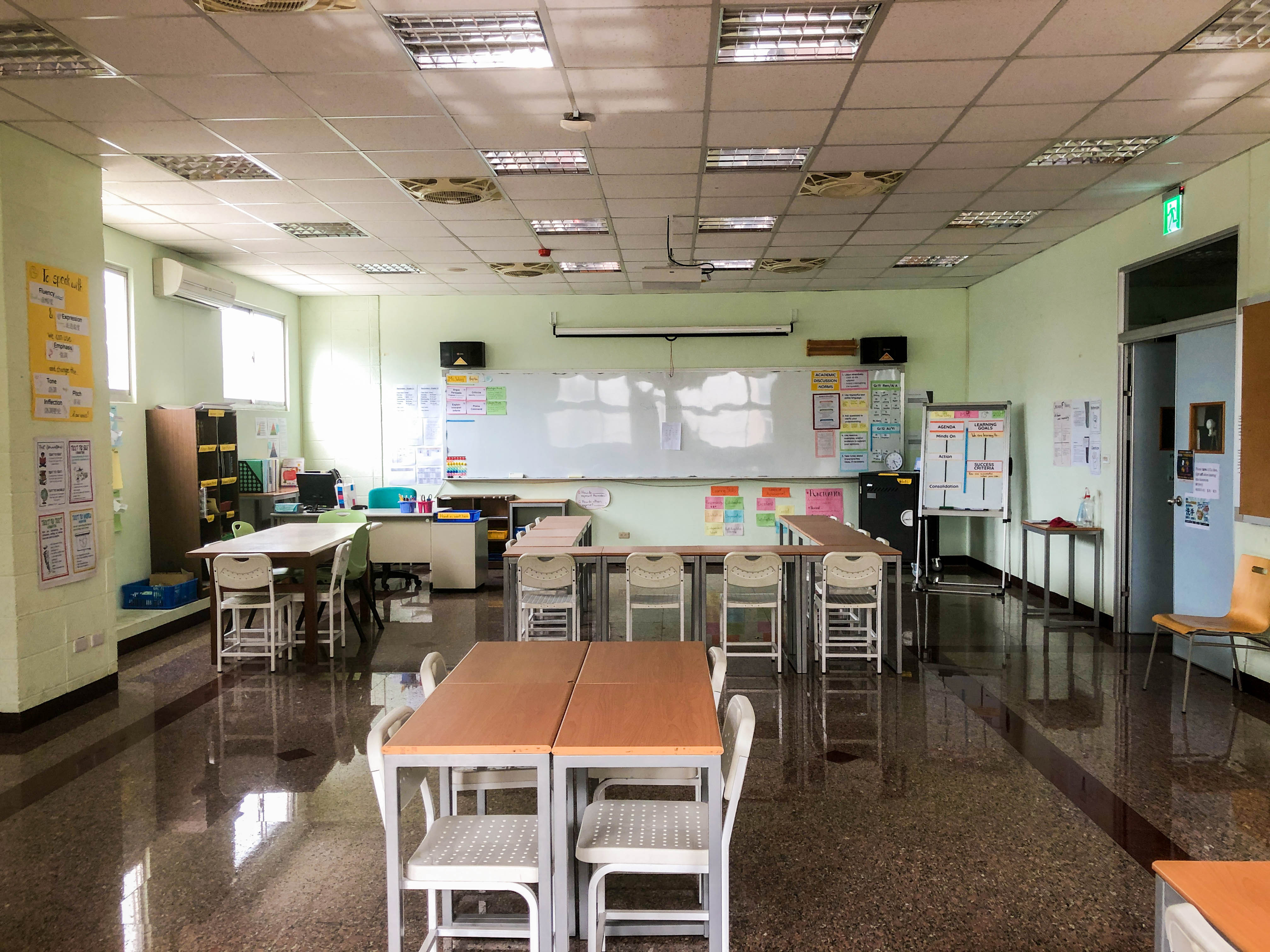
This year, the aftertaste of goodbye is more bitter than sweet. The culprit, of course, is a global pandemic by the name of COVID-19. As I am writing this at the beginning of July on a hot day in Taiwan, I think back to the final moments of my last grade 11 ESL class this morning. Instead of going through the sentimental routine of waving farewell in our sunny classroom, we all stared at each other through the artificial light of our screens - tiny, pixelated faces that poorly represent the dynamic people behind them. We took a screenshot of ourselves on Google Meet, lined up neatly in rows of rectangular cells. I gave my closing remarks, said 再見 (zài jiàn), and then watched as my students unmuted themselves to respond along with a flurry of waves and bright smiles. One by one, they disappeared from the screen until I was left staring at my reflection in the isolated silence of my living room.
Let’s rewind seven weeks, to Monday May 10th. It was the last week of term five, which meant that students were gearing up for the eight back-to-back sectional exams that would be taking place on Thursday and Friday - a routine event that closes the end of each term at our school in New Taipei City. My grade 12 students, with the colossal GSAT (Taiwan’s General Scholastic Ability Test required for post-secondary admission) behind them and university acceptances obtained, appeared at ease with a strong serving of senioritis. Understandable. My grade 11 students, on the other hand, trickled into our classroom looking worn out. A couple of them turned their arms and jackets into makeshift pillows on their desks, attempting to sneak in a quick nap before the 10-after bell signaled the start of class. Recalling their fatigue tugs at my heartstrings. Even after nearly two full years of being here, I am still coming to terms with the massive scale of exam culture in the Taiwanese education system and the sheer will it takes to survive it.
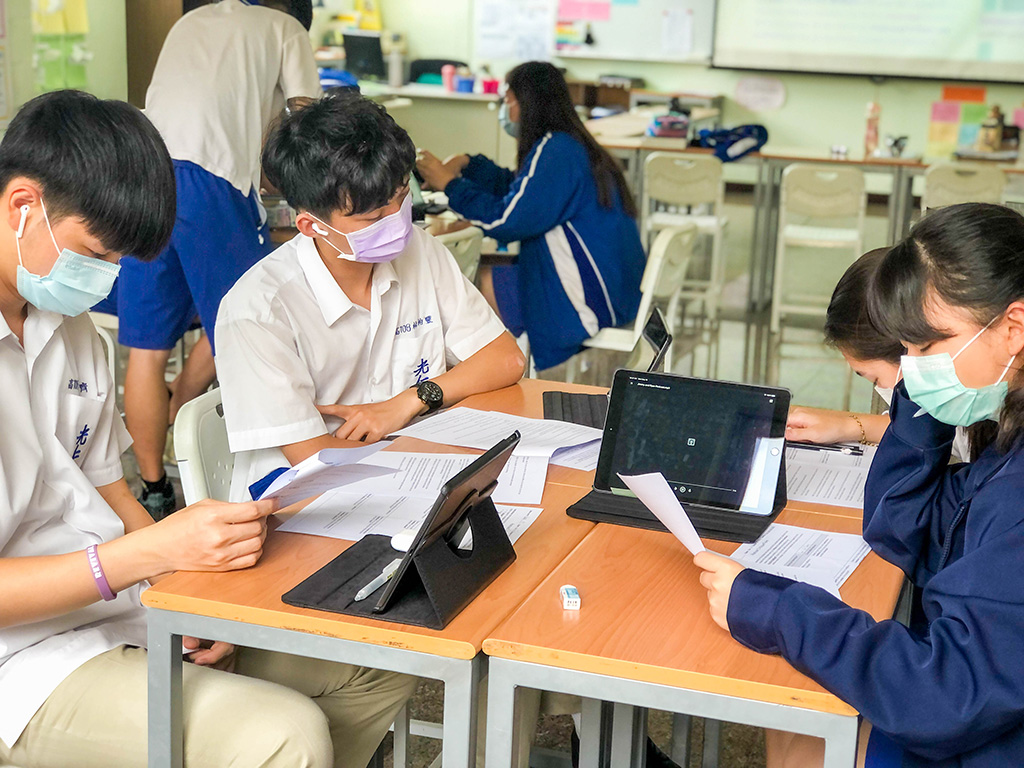
That Monday, despite being tired, my grade 11 students did what they always did - they pulled themselves up and forged ahead anyway. They spent that class listening to their peers’ podcast episodes, which they had completed the week prior for their end of term culminating task. Even when sleep-deprived, they still smiled and bantered as they gave each other feedback. As I circulated between groups, I faintly noted how nice the atmosphere was - there was a sense of familiarity and contentment that came with simply being there altogether in a shared space. This particular group of students had always gotten along well with each other, and it was evident that everyone’s collective fatigue, mine included, was made more bearable through the strength of their camaraderie. When the bell rang, we exchanged our usual chorus of goodbyes as we parted ways for lunchtime.
Everything that happened that Monday was blissfully normal. There was no imminent sense of danger, even though mask wearing had been made mandatory due to a slight single-digit uptick in daily local COVID-19 cases. During Wednesday’s class, I didn’t know that it would be the last time seeing my students gathered in our classroom. This possibility only crossed my mind later that afternoon when the report of daily local cases rose into the double digits. Thursday and Friday passed by in a blur of marking and report card preparation, during which I saw a few of my students as I invigilated a series of exams in their homerooms. While scanning over a room of forty something students, I suddenly started to feel worried about how many of us were crammed, albeit masked, in an enclosed space. Surely, having less than thirty cases reported daily in the entirety of Taiwan wouldn’t mean we were at a huge risk, right? It may sound paranoid, but when you’ve been living in a bubble free of local cases for months on end, a handful of cases is enough to spark concern. Just before I left the school that Friday, I chatted with a colleague about the rise in cases as we coordinated schedules for some reading benchmark tests for next week. “Sounds good,” I said in jest, “assuming that we’ll be here on Monday!”
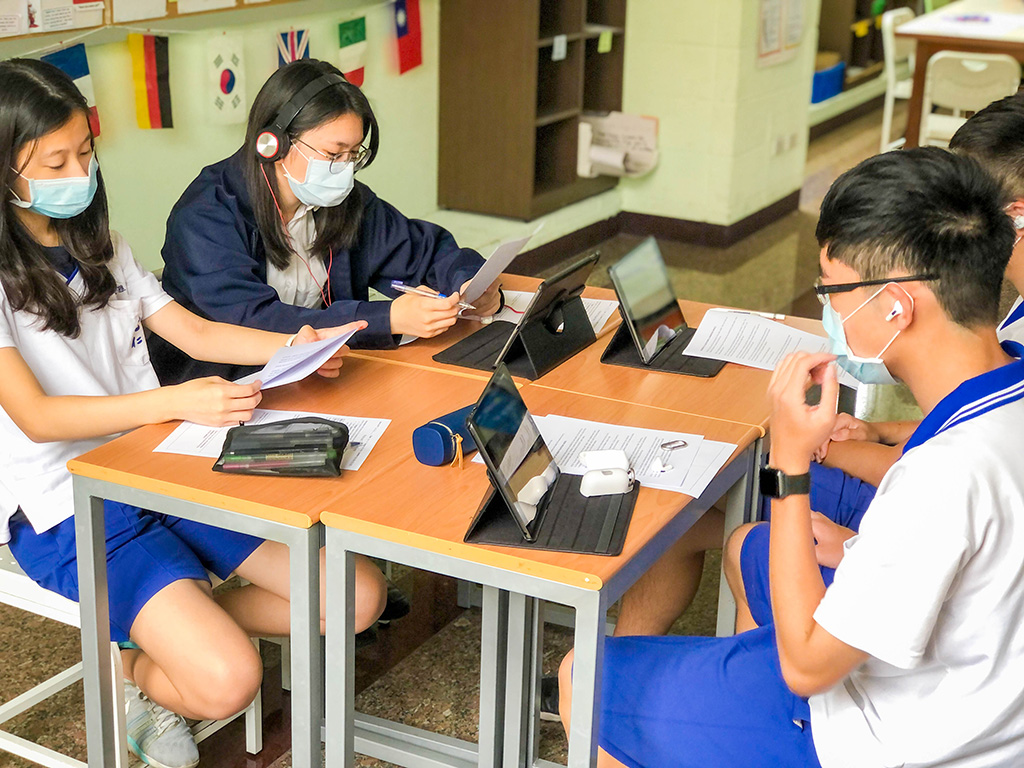
We did not return on Monday.
That weekend, after local cases jumped from 29 on Friday to 180 on Saturday, the Central Epidemic Command Center (CECC) raised the COVID-19 alert level for Taipei City and New Taipei City to Level 3. The 72 hours following this Saturday announcement could aptly be described as “quite a time.” School closures had not yet been announced, but several of us suspected that it was imminent. Sure enough, as I was getting ready to sleep on Sunday night, I received a message from our administrative team that our school had made the decision to suspend in-person classes and start online learning on Wednesday May 19th. On Monday, the Ministry of Education officially announced that schools would close for two weeks and be substituted with online classes. I can only imagine the chaos that school administrative teams around the nation were going through as they attempted to keep up with the rapidly evolving situation.
Plans changed again that evening. I recall making a pack of cheese 불닭볶음면 ramen (you know, the infamously hot “fire chicken” noodles) for dinner when our ESL department LINE group chat blew up with a slew of messages, which notified us that we were to start teaching on Tuesday May 18th - a day earlier than expected. The first class was barely 13 hours away for some teachers. I gathered my bearings in between bites of tear-inducing spicy ramen. Two hours and an empty jug of orange juice later, our ESL department admin team held an emergency online meeting with teachers to discuss logistics and help us prepare for our first lesson one sleep away. The cherry on top came in the form of a sudden power outage across parts of Taiwan, with rolling blackouts scheduled conveniently during said emergency meeting. In between moving everything online, lesson planning for a new term, and random power outages, it’s safe to say that everyone was working overtime and in overdrive.
In a somewhat ironic turn of events, these developments thrust Taiwan’s education system into the same situation that just about every other education system in the world was forced to adapt to just over a year ago. It was in the throes of this ordeal that I came to appreciate the silver linings of our particular situation. For example, students and teachers in the ESL program had existing Google Classrooms fully set-up and substantial prior experience navigating the system, which is the exception rather than the norm at our school where most other courses follow a textbook-based curriculum. Although using Google Meet was relatively new to them, our students were familiar with things like collaborating on shared documents and slides, accessing digital resources, and completing assignments online. These skills may seem extremely basic, but they are all new to everyone at some point in their lives. Case in point, I remember teaching grade 7 students to use Google Classroom for the first time last year. I never knew could feel so defeated explaining for the nth time how to “turn in” an assignment. The experience left me bewildered, though it’s humorous to look back on now. Amidst the chaos of transitioning to online learning, having a head start on critical skills and infrastructure was a saving grace.
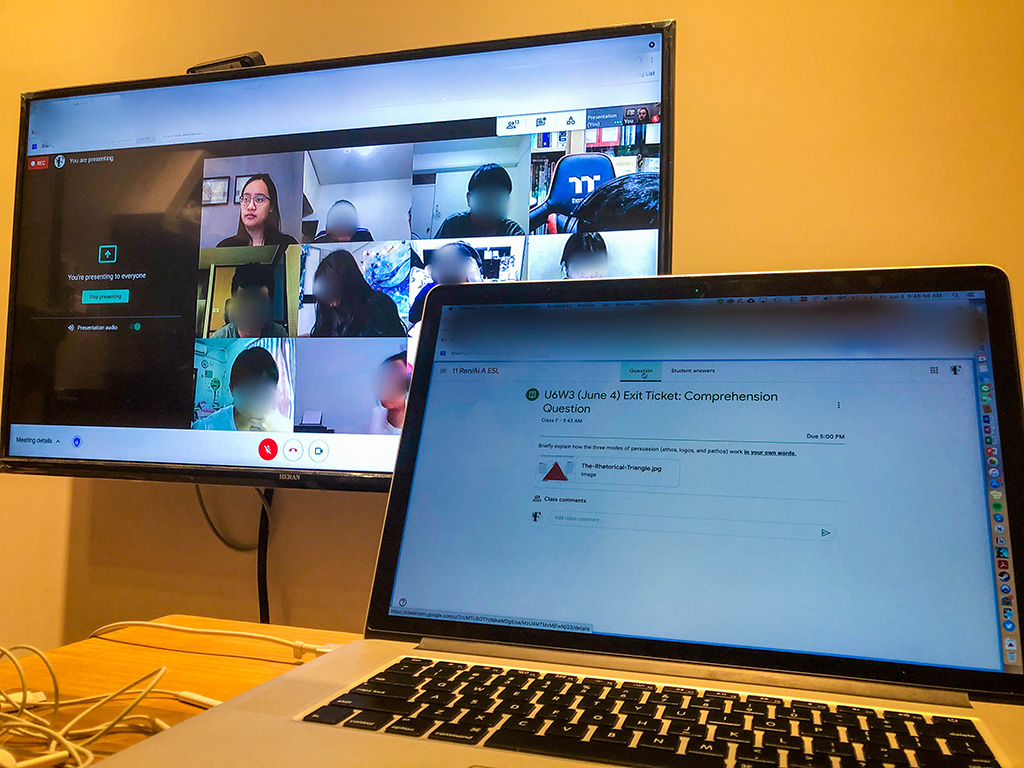
Thanks to these advantages and the fact that I taught classes with both older and fewer students than the rest of my colleagues, my first and subsequent days of online teaching passed by without much of a hitch. Almost all of my students regularly showed up on time. Screen sharing worked fine, and my students followed instructions and completed activities with very few issues. They all respected and followed our new class/break/class/break schedule, which was implemented by the school to allow students time away from their screens within our standard two hour ESL classes. Everyone was quiet - well, they had to be considering they were required to be on mute - which was an eerie experience in contrast with the chatter that normally fills our classroom. Now that I could only see them silently smile (grimace?) at my attempts to crack a joke, I dearly missed hearing their laughter and candid responses in-person. The absence of real, three-dimensional people as I spoke to the void of my living room was visceral.
Everyone’s cameras were also all turned on consistently, as required by the school. This rule, along with the fact that we were required to record all of our online classes, came up as an intriguing discussion point when I caught up with some friends in Canada a few weeks later over a video call. As educators in various settings themselves, they noted the contrast between my online teaching experience in Taiwan and that of our mutual friends and teacher colleagues in Canada, where the situation is often flipped - attendance is inconsistent, cameras are frequently turned off, and recording classes would bring up a plethora of privacy issues. With this statement, I am not implying that one of the two systems is better or worse - rather, our conversation raised some interesting questions and reflections on these differences, which I’ve filed away to unpack at a later time when I can look at this situation from a distance.
I had been worried that there might be a dip in student engagement as the weeks wore on and the screen time wore us out. Yet, I was pleasantly surprised that I actually got more consistent work from my students compared to our days in-person. Most notably, they stayed awake during class. School hours in Taiwan are long and demanding, so it’s not unusual to see students fall asleep or nod off. Although we were all sad to be unable to see each other in-person, my students did tell me that they appreciated the convenience of not having to commute a long time to school and the increased flexibility of their schedules. It seems like this meant they were also getting more much-needed sleep - a relief to see.
There were other silver linings, too. By the time Taiwan entered the realm of remote learning, online conferencing tools like Google Meet and Zoom have improved significantly from their earlier versions at the start of the pandemic. Educators around the world have shared countless tips, digital resources, and pieces of advice over the internet. Even the fact that the start of online learning coincidentally matched with the first day of our last term at our school made for a cleaner transition to online learning compared to pivoting midway through a term. Some humorous news stories also came out, such as one about a Taiwanese professor teaching an economics class on Twitch allegedly to avoid streaming issues on another platform. Expecting to teach a class for 66 students, he ended up attracting over 16,000 viewers. All of these factors helped lighten what was otherwise a somber time as local cases climbed for the first two weeks of online learning, peaking at approximately 700 in a day.
The most significant pillar of strength that kept us afloat was undeniably the teamwork and mutual support shared amongst everyone in our ESL department. I have no doubt that we were all stressed, tired from staring at our screens, and worn out from the five terms we had already completed behind us. Yet, all of the teachers, administrators, and support staff on our team showed incredible positivity, resilience, and flexibility as we gradually adapted to our new normal. This endured even as the government extended school closures (originally scheduled to end May 28th) until June 14th and eventually to the end of the school year on July 2nd. Our admin meetings on Tuesdays continued to be regularly filled with shoutouts and positive messages for each other, serving as a source of energy and hope as we clicked and typed our way to the end of the term from disparate places.
In the grand scheme of things, we are very lucky and fortunate. I am safe, my students are safe, and my friends and colleagues are safe. As COVID-19 continues to uproot and take lives across the globe, those of us in Taiwan have escaped the worst of it, at least for now. Last year, I wrote a blog post about the onset of COVID-19 in early 2020 and how it impacted Taiwan - which is to say, very little. We even had the world’s longest COVID-free streak of 253 days. During that time, it felt unreal to complete the school year with my students in-person while the rest of the world was behind screens. This year, it became our turn to brave the storm.
Here I am again in my living room, staring at my blinking cursor as I attempt to parse out my thoughts. My mind drifts back to my students and our class this morning as I mull over the events of the last several weeks. Lately, cases have simmered down into the double digits, so I keep my fingers crossed in hopes that cases continue to fall and vaccinations continue to rise. If this trend continues, perhaps my students will be able to resume the cancelled summer plans they told me about today… or, maybe they would rather not, as several of their plans involved attending cram school. Maybe, schools will be able to start the next academic year in-person when September arrives. For a moment, I imagine how my students might greet each other after so long. My mental image includes a lot of bright smiles, until I realize that they would almost all certainly be wearing masks. Smiling eyes, then.
I would be remiss if I did not mention my students once more. Throughout the trials and tribulations of this time, they have greatly impressed and inspired me with how quickly they adapted to online learning, kept pace with challenging content, and stayed engaged throughout every single class. Moving to online learning for the final term of the year is plenty of cause for concern, but these students rose to the occasion and exceeded my expectations. I’m extremely proud of the challenges they’ve overcome and the progress they’ve made, and I hope they look back on this year fondly. If you are reading this and you are my student, please know that I am cheering you on.
Finding a sense of closure for a disrupted school year at times felt like a doomed pursuit, especially when our hopes were dashed for an in-person school reunion. Writing this reflection was partly an attempt to carve out a little space in this corner of the internet to mourn this loss. Especially as I will be returning to Canada this summer for the foreseeable future, it’s hard not to think of this time as the last chance I will ever see my students, colleagues, and friends in Taiwan. Saying farewell to them online does not feel quite right when it was originally intended to be a moment of parting in a shared physical space. This “ending” feels temporary and liminal. Yet, with this thought comes a revelation that I perhaps unconsciously recognized this morning at the end of class. It doesn’t have to be an ending. I feel a little more at peace when I recall what I told my students: like the word 再見 (zài jiàn) in Chinese, let’s consider this a “see you again” rather than “goodbye.”
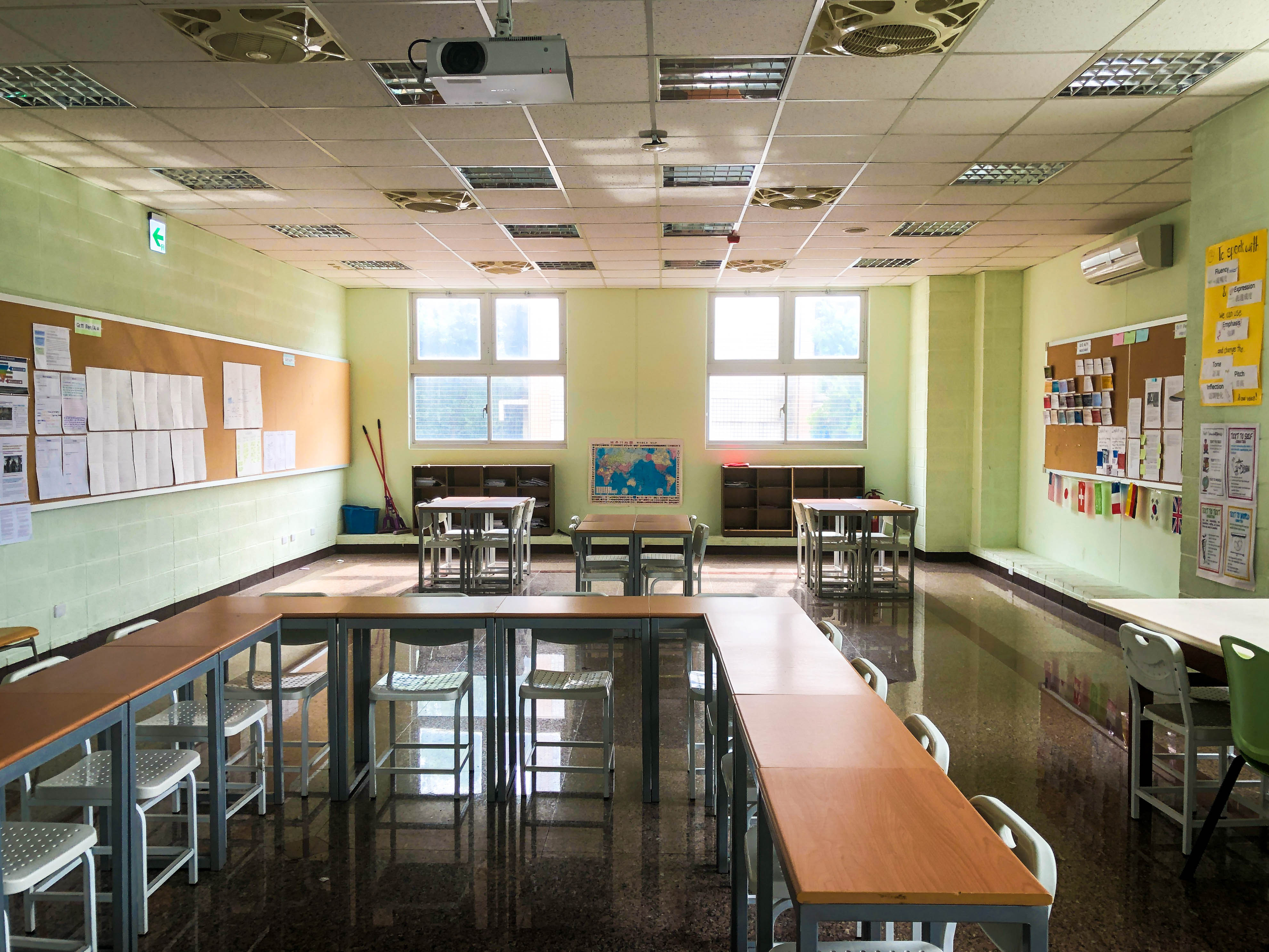
Sophia Wang is a high school teacher from Toronto, Canada with a background in music and English. Over the past two years in Taiwan with the Foresight ESL program, she has taught grades 7, 11, and 12 at Kuang Jen High School. When she’s not working, she enjoys playing the flute, learning languages, swing dancing, and exercising her graphic design skills.
